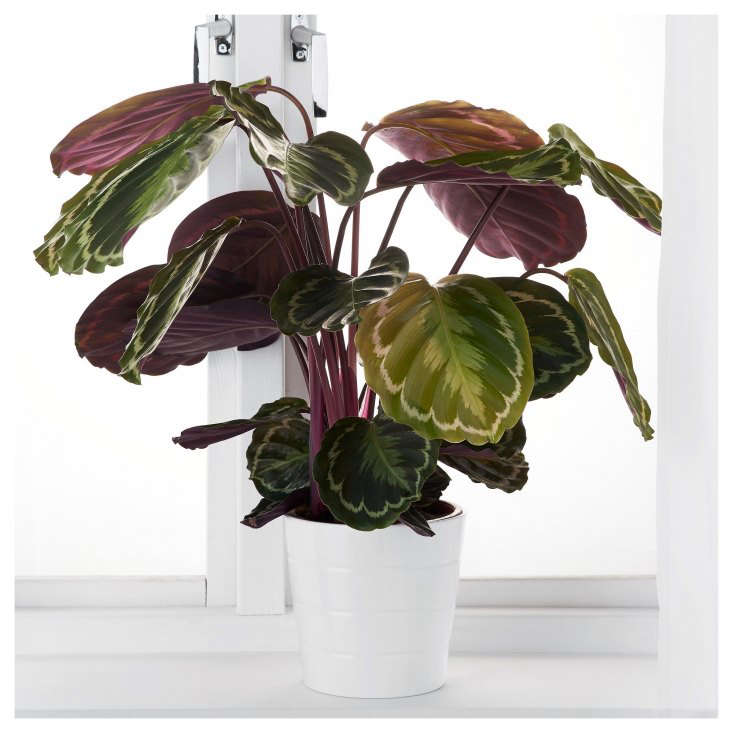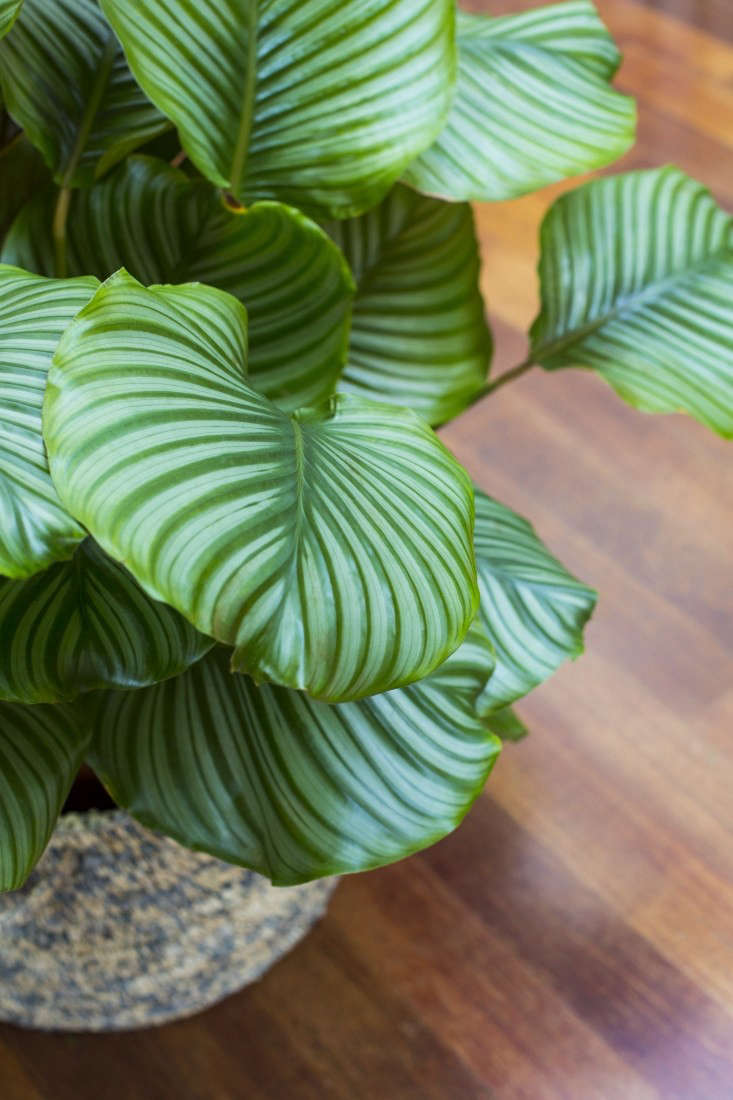Prayer Plants: Calathea or Maranta?
The last houseplant I bought for myself (and not for a client) was a prayer plant. What drew me to it? Well, I was intrigued by the striking multicolored striped leaves, its smaller habit, and yes, the common name (because who can’t use a little more prayer in any form?)
But did I buy a Maranta or a Calathea? Before we go any further, let’s clarify terms. The Marantaceae plant family includes both the Maranta and Calathea genera. Closely related and very similar in appearance, plants in both genera are often referred to as prayer plants—and both have many cultivars. What they have in common is ornamental, variegated leaves (often with deep purple or white veining) that are a striking visual component of any collection of houseplants.
Native to warm, tropical climates, prayer plants may be grown as perennials only in USDA growing zones 11 or 12. In colder regions, keep them indoors in pots. Read on to learn how to care for these positively charming plants.

Although the prayer plant’s evening routine is a charming display, it isn’t the only reason indoor gardeners adore this plant. Wide, oval leaves feature strong variegation, splashed with colors ranging from dark green patches to bright pink veins.


Cheat Sheet
- As with all houseplants, inspect a prayer plant for pests and bugs including aphids, spider mites, and mealybugs. Banish spider mites by rinsing the plant with a strong stream of water. For mealybugs, dab a cotton swab in rubbing alcohol and rub away the pests.
- Grow this nonpoisonous, spreading plant in a hanging container or encourage prayer plant’s horizontal habit to creep over shelves and long tables.
- Flowers are small spikes and are white to a pale purple, but houseplants rarely bloom. This is the type of plant you grow for the foliage.

Keep It Alive
- Although tolerant of low light, it does best with bright, indirect sun. With insufficient light, the leaves do not fully open in the morning. When there is too much light, the leaf colors can fade.
- Prefers well-draining soil and high humidity. This means it should be kept moist but not soggy. Also placing the plant among other plants can create a more humid environment. Another idea is to mist daily with warm water.
- Feed a prayer plant every couple of weeks—spring through fall—with an all-purpose fertilizer. Also use warm or at least room temperature water when giving it a drink. (If you miss a feeding or two, don’t worry. Your prayer plant will survive.)
- Because of its shallow roots, your prayer plant should be in a container that is more squat than deep.

See more about calatheas and marantas in Prayer Plants: A Field Guide to Planting, Care & Design. And see more of our favorite tropical plants in Tropical Plants 101 and more indoor plants with exotic foliage in Houseplants 101. For more inspiration:
- Fiddle-Leaf Fig Trees: A Field Guide
- How to Make an Orchid Bloom Again
- Philodendrons: A Field Guide
- How to Keep an Indoor Citrus Tree Happy
- Succulents & Cacti: A Field Guide
- Maui Beach Cottage with a Tropical Garden
- Orchids 101: A Field Guide
Finally, get more ideas on how to successfully plant, grow, and care for prayer plant with our Prayer Plant: A Field Guide.
Finally, get more ideas on how to plant, grow, and care for various houseplants with our Houseplants: A Field Guide.
Interested in other tropical plants for your garden or indoor space? Get more ideas on how to plant, grow, and care for various tropical plants with our Tropical Plants: A Field Guide.












Have a Question or Comment About This Post?
Join the conversation